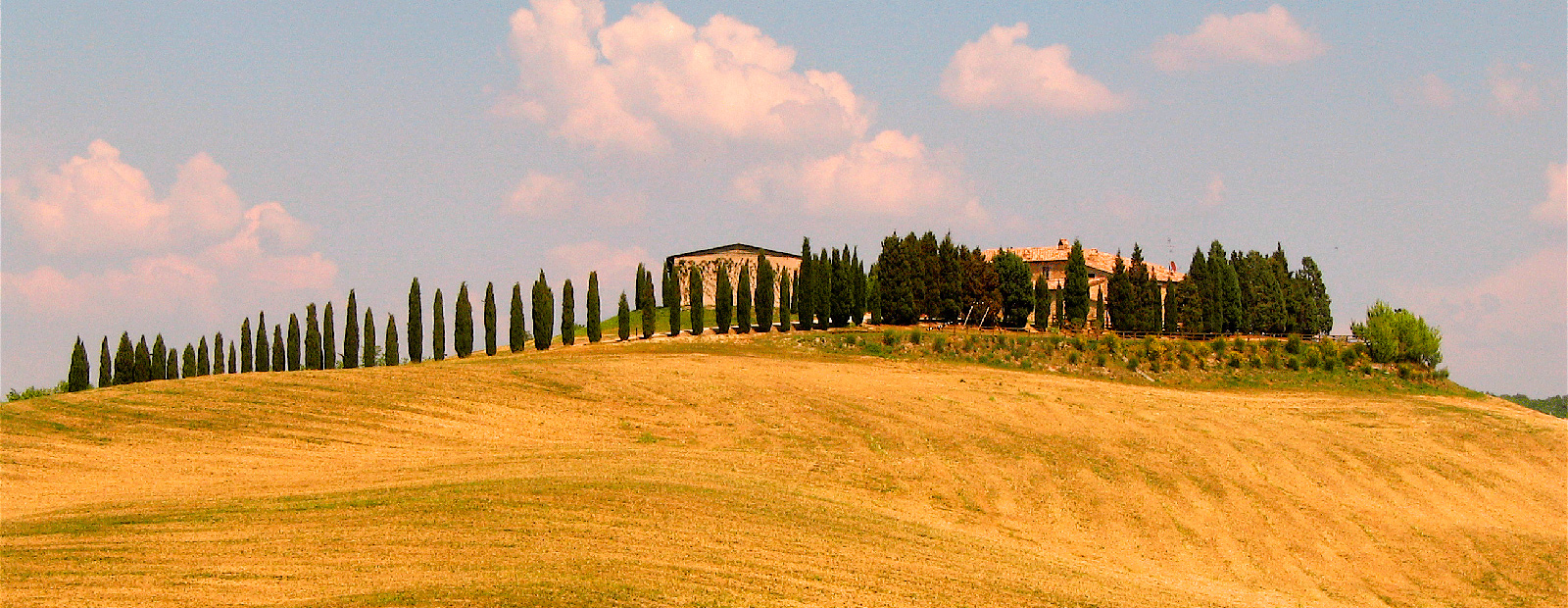Viniculture and delicacies of the region
Tuscany is one of Europe’s famous vineyards. Besides the white wines of the Vernaccia, the region is famous for its red wines of the Chianti, Brunello di Montalcino or the Vino Nobile di Montepulciano. Another speciality is the sweet wine Vino Santo that is usually served as an appetizer or a dessert wine. Delicacies of the Tuscan cuisine: Bistecca alla Fiorentina (beef steak, grilled on the bone), Trippa alla Fiorentina (chitlings with tomato sauce), Pappardelle alle Lepre (pasta with hare sauce), Ribollita (soup with cabbage and other vegetables), Risotto nero (rice with seafood), Stoccafisso alla Livornese (stockfish, steamed in oil, wine and vegetables), Bruschette (roasted bread with garlic, oil and spread), Salsicce (sausage), Pecorino (feta cheese), Mozzarella di bufala (buffalo cheese), Cantucci (almond cookies).
